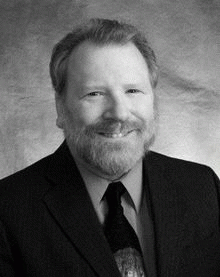Reprinted from http://neweconomicperspectives.org/2013/09/wall-street-journal-pines-return-liars-loans.html#comment-376545
The Wall Street Journal's editorial staff (WSJ) criticizes the Dodd-Frank Act and the leadership of the financial regulatory agencies. I share many of those criticisms, but I parted company when the WSJ expressed its horror that: "The regulation micromanages bank decisions down to the kind and quality of loan." The Dodd-Frank Act bans a "kind" of loan based on the inherently fraudulent "quality of [the] loan." The Act bans liar's loans. The WSJ considers this ban so appalling, so obvious a violation of the divine right of banks, that it labels it "micromanage[ment]" and assumes that the label proves the absurdity of banning liar's loans.
As I have been explaining for over two decades, no honest lender would make liar's loans. Here is George Akerlof and Paul Romer's explanation of the analytics in their famous 1993 article in which they expressly cited my explanation. Note the eerie manner in which they discuss the specific underwriting failures that characterized liar's loans a decade later.
"[An officer] who is gambling that his thrift might actually make a profit would never operate the way many thrifts did, with total disregard for even the most basic principles of lending: maintaining reasonable documentation about loans, protecting against external fraud and abuse, verifying information on loan applications, even bothering to have borrowers fill out loan applications. 5
5. Black (1993b) forcefully makes this point" (1993: 4 & n. 5).
When a lender fails to follow "even the most basic principles of lending" it will suffer massive losses. The controlling officers, however, will be made wealthy by making crappy loans. Indeed, Akerlof and Romer stressed that accounting control fraud is a "sure thing" (1993: 5).
Here are the famous five warnings of the mortgage industry's anti-fraud unit (MARI) that the Mortgage Bankers Association sent to virtually every significant mortgage lender in early 2006.
- Stated income loans "are open invitations to fraudsters"
- Study: fraud incidence is "90 percent"
- "[T]he stated income loan deserves the nickname used by many in the industry, the "liar's loan.'"
- "It appears that many members of the industry have little " appreciation for the havoc created by low-doc/no-doc products that were the rage in the early 1990s. Those loans produced hundreds of millions of dollars in losses"."
- "Federal regulators of insured financial institutions have expressed safety and soundness concerns over these loans"."
Even Ben Bernanke, the Nation's anti-regulator in chief, used the Fed's unique statutory authority under the Home Ownership and Equity Protection Act (HOEPA) of 1994 to ban liar's loans in mid-2008. Bernanke delayed the effective date of the rule by 15 months because one would not want to inconvenience a fraudulent lender.
Alan Greenspan ignored Fed Member Gramlich's famous warnings about non-prime loans and his rejected his plea that Greenspan send the Fed's examiners into the bank holding company affiliates to find the facts. The Fed's supervisors were reduced to the ability to simply ask the systemically dangerous institutions (SDIs) what kind of loans they were making (a process certain to lead to substantial understatement by the SDIs).
"Sabeth Siddique, [asked] large banks in 2005 "how many of which kinds of loans they were making. Siddique found the information he received "very alarming," [N]ontraditional loans made up 59 percent of originations at Countrywide, 58 percent at Wells Fargo, 51 at National City, 31% at Washington Mutual, 26.5% at CitiFinancial, and 28.3% at Bank of America.
[T]wo-thirds of the nontraditional loans made by the banks in 2003 had been of the stated-income, minimal documentation variety known as liar loans, which had a particularly great likelihood of going sour.
The reaction to Siddique's briefing was mixed. Federal Reserve Governor Bies:. "Some people on the board and regional presidents . . . just wanted to come to a different answer. So they did ignore it, or the full thrust of it,' she told the [FCIC].
Within the Fed, the debate grew heated and emotional, Siddique recalled. "It got very personal,' he told the Commission. The ideological turf war lasted more than a year, while the number of nontraditional loans kept growing"." (FCIC 2011: 20-21).
Here's the bad news. The senior Fed supervisor asked the SDIs in 2005 for data on their lending as of yearend 2003, which was the beginning of the massive rise in making liar's loans. From 2003-2006, the number of liar's loans grew by over 500 percent. By 2006, 40% of all mortgage loans originated that year were liar's loans. By 2006, half of the loans that the mortgage industry called "subprime" were also liar's loans (the two categories are not mutually exclusive). Consider how insane it would be for an honest lender to make liar's loans, with a 90% fraud incidence, to borrowers with known, severe credit defects. It was this massive increase in liar's loans that hyper-inflated the housing bubble from 2003-2006 (and delayed its collapse until mid-2007). It was the combination of liar's loans and subprime that guaranteed catastrophic losses to lenders (but huge gains to their controlling officers through the accounting control fraud recipe). By 2006, the fraudulent lenders made over two million fraudulent liar's loans annually -- and sold roughly that amount of fraudulent loans through fraudulent "reps and warranties."
(Note: You can view every article as one long page if you sign up as an Advocate Member, or higher).





